Last Updated on August 27, 2024 by Team Ideas24
Some people find comfort in the sweat of a workout session. Others enlist the help of meditation teachers. But a growing number of people are choosing the simplicity of slime as their preferred stress outlet!
With more than 3 million Instagram posts tagged #slime, there is definitely something universally appealing about slime!
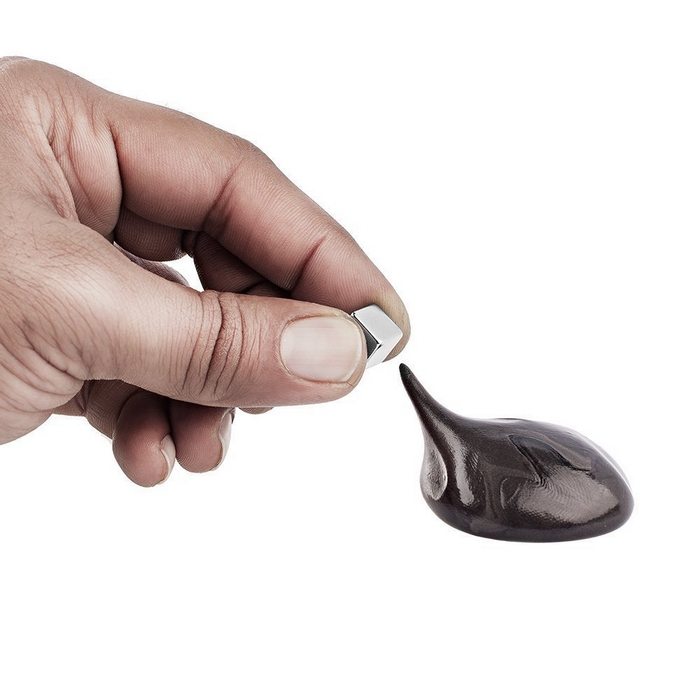
You can squish it, stretch it and watch it make weird shapes as you throw or hold it up. Add the magnetic feature to it and you have something that’s even more awesome!
Yes – it may sound too cool to be true, but magnetic slimes do really work and you can easily make one yourself. The kids can definitely join in this fun activity too!
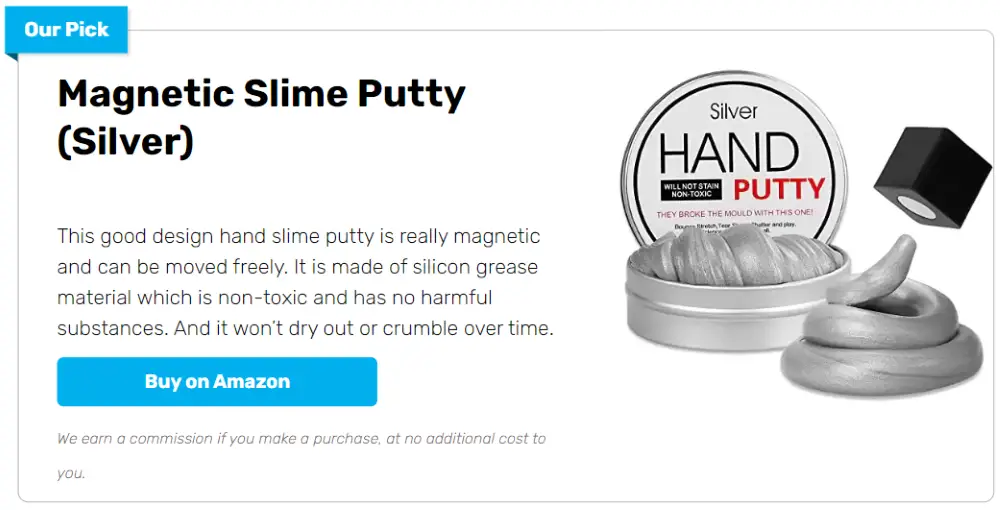
Looking for a fun and creative activity for kids? Why not try making your own DIY magnetic slime? This activity is perfect for rainy days or when kids are feeling bored, and it’s a great way to teach them about the properties of magnets. Plus, who doesn’t love playing with slime?!
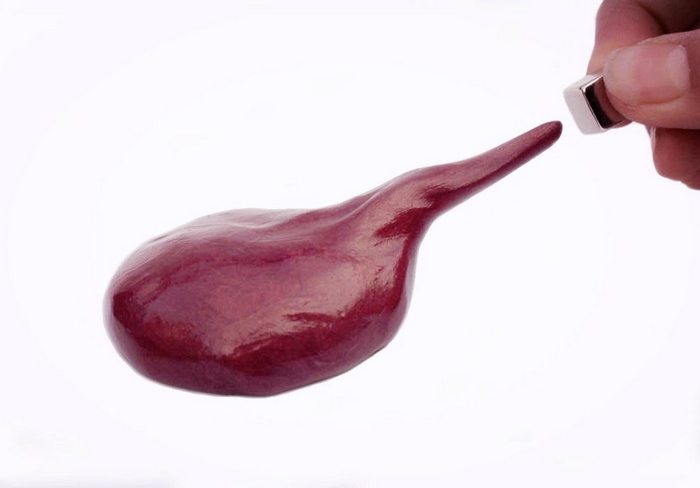
There are so many different ways that you can design your own magnetic slime! You can add in different colors, glitter, and even little toys to make it extra fun. The possibilities are endless! Here are a few ideas to get you started:
Click on any image to start the lightbox display. Use your Esc key to close the lightbox.![]()
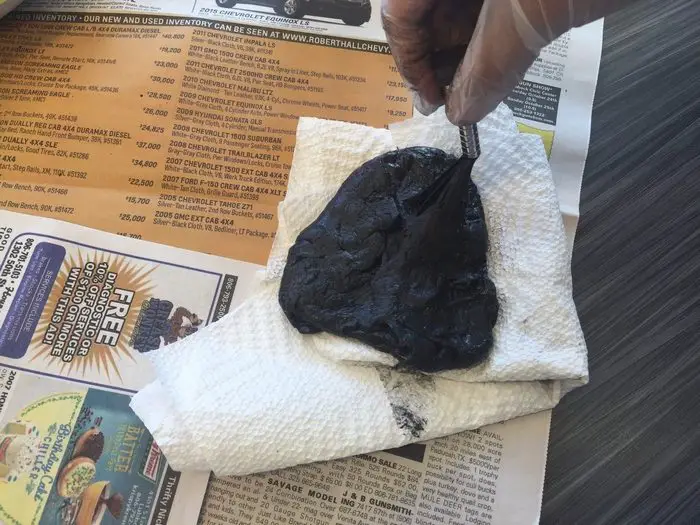
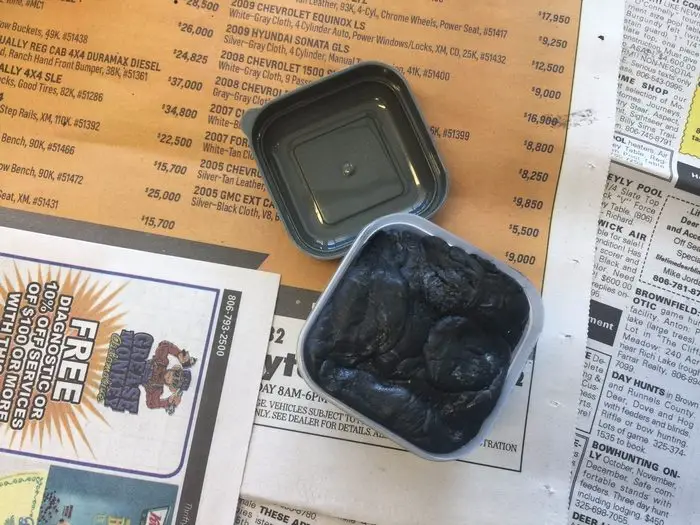
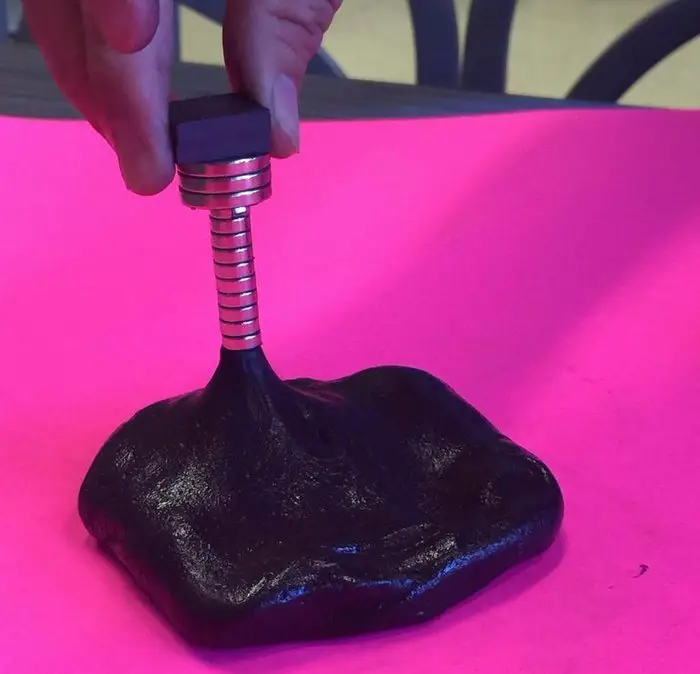
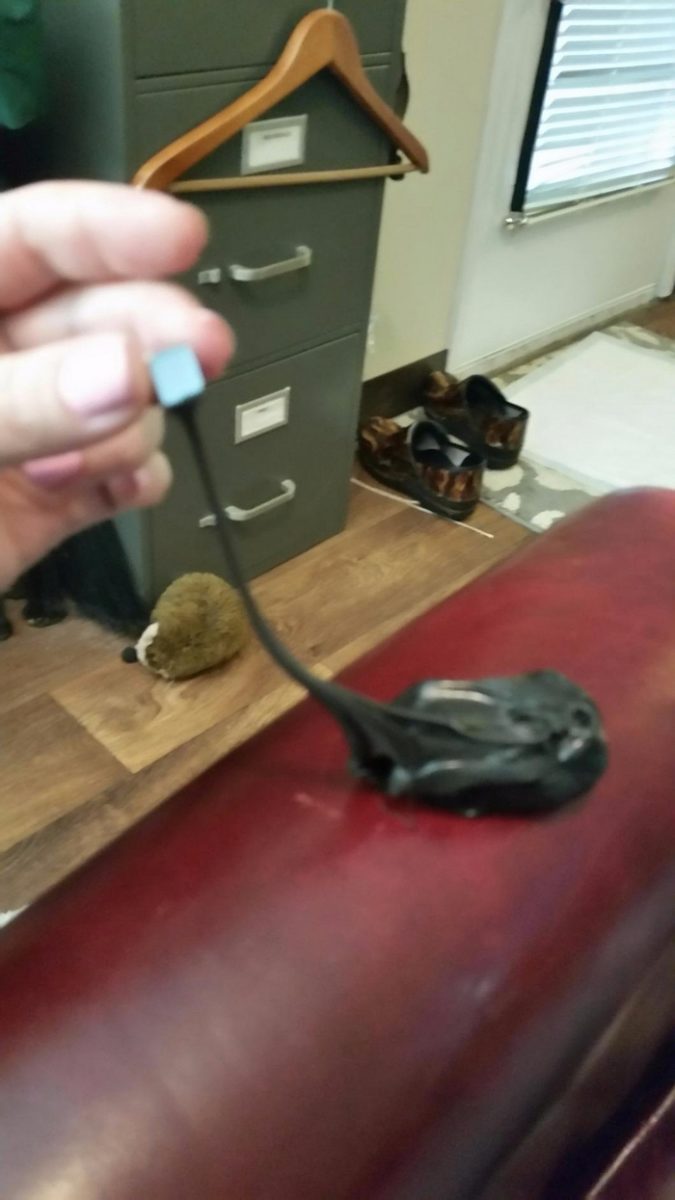


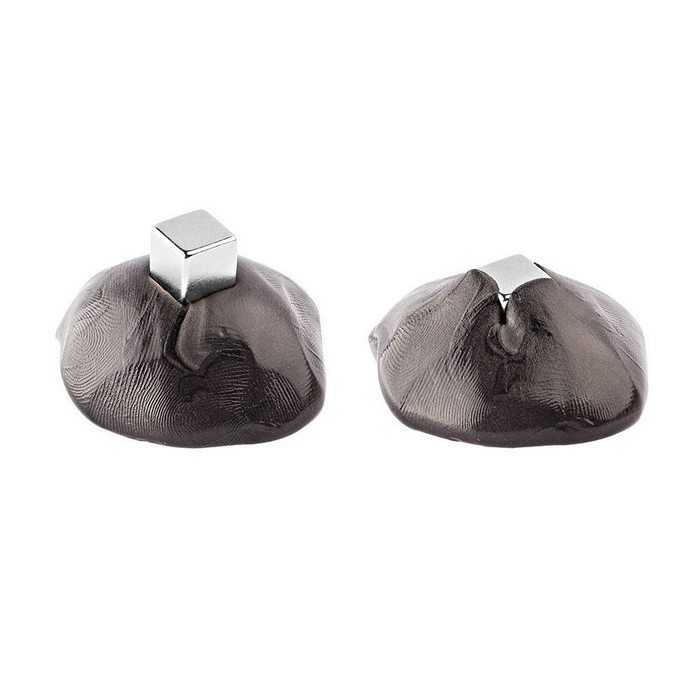
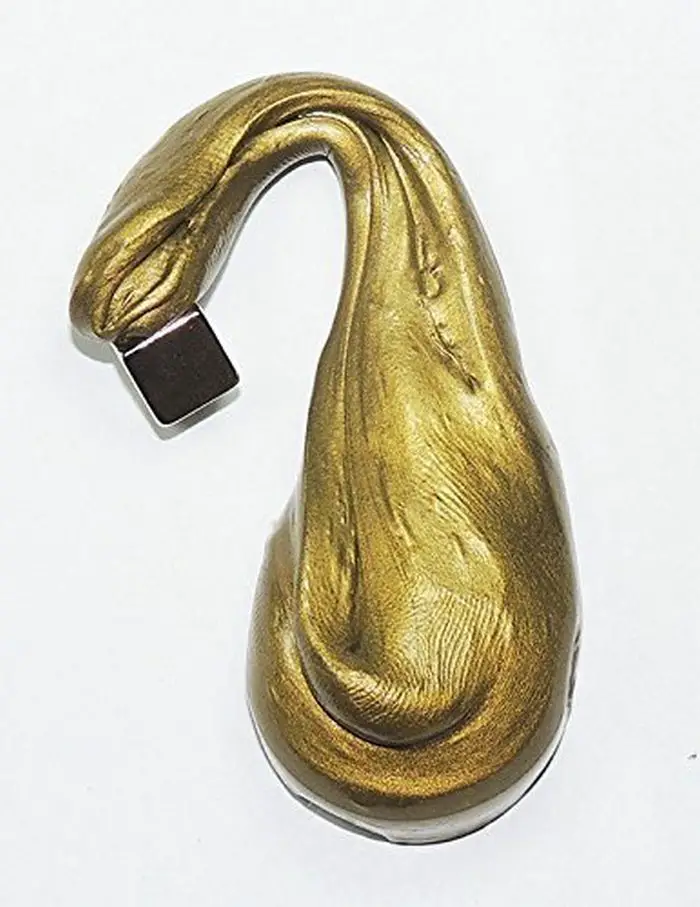
Now this project is a little messy to do. Although the slime is easy to wipe out don’t forget to use old newspapers or plastic covers to protect surfaces you don’t want to risk getting stained.
Here’s what you need to make this project:
- Liquid Starch
- Elmer’s Glue
- Iron Oxide Powder
- Disposable Bowls and Craft Sticks
- Neodymium (Rare Earth) Magnet
Contents [show]
How to make your own magnetic slime
Doing this project with kids? Make sure the curious little ones don’t eat the slime! Also, iron oxide powder is not good to breathe in. So make sure to read the complete tutorial we’ve linked for you below our album and follow the instructions properly for a fun and successful DIY magnetic slime project with them!
1. Create the mixture
First, add 1/4 cup of white PVA glue to your bowl. In order to get all the glue out of the measuring cup, you may have to scrape it with a spoon.
Iron oxide powder should be added in two tablespoons. It is expected that the mixture will appear solid black.
Finally, add 1/8 cup liquid starch.
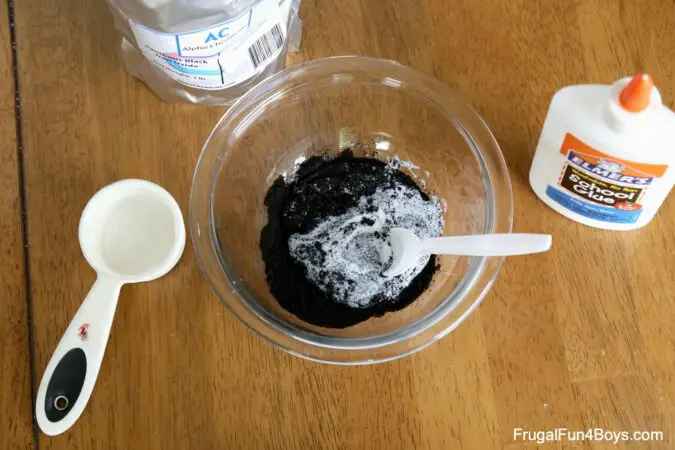
2. Stir the mixture
Make sure the glue and starch mixture is thoroughly mixed. The slime will form as soon as the starch reacts with the glue.
To tell if you had too much starch, this will be shown upon mixing, there will be unmixed starch after stirring. To fix this, just simply rinse the slime under cold water.
3. Work on the slime with your hands
Make your slime by kneading it. After kneading the slime and before playing with it, I wash my hands. As a result, the slime is less sticky.
Knead a small amount of starch into your slime if it’s too sticky. On the other hand, if it’s too stringy, knead in more glue.
If your slime won’t respond to your magnet, it’s probably the strength of the magnet. You can try ordering some cylinder neodymium magnets that are stronger!

Now you’re done with your magnetic slime! Your kids will absolutely love this! They’ll have so much fun playing with it and seeing how it reacts to different objects. Plus, it’s a great way to teach them about science and magnetism. Thank you for trying out this project!
You can get step-by-step instructions from Sarah over at Frugal Fun 4 Boys and Girls…
The Science Behind Magnetic Slime
Magnetic slime combines the fun of traditional slime with the fascinating properties of magnets, creating an educational tool that delights and educates simultaneously. This unique substance leverages the principles of magnetism to demonstrate scientific concepts in a hands-on way. Here’s a breakdown of the science behind magnetic slime and how it captivates both young minds and the young at heart.
The Role of Iron Oxide Powder
The key component that transforms regular slime into magnetic slime is iron oxide powder. This powder consists of tiny iron particles that are inherently magnetic. When mixed with the slime base, usually a polymer like PVA glue, the particles distribute evenly throughout the slime.
This even distribution allows the slime to react uniformly to magnetic fields, creating the intriguing visual effect of the slime moving or standing up when a magnet is brought close.
How Magnets Interact with Slime
Once the iron oxide is integrated, the magnetic slime can be influenced by external magnetic fields. The science behind this interaction lies in the properties of the iron particles within the slime.
Each tiny particle becomes a mini magnet with a north and south pole. When a strong external magnet, like a neodymium magnet, is brought near, these particles align with the magnetic field. This alignment causes the slime to stretch or move towards the magnet, as each particle pulls in the direction of the magnetic force.
Visualizing Magnetic Fields
Magnetic slime not only entertains but also serves as a powerful educational tool to visualize magnetic fields. As the slime responds to a magnet, it changes shape and moves in patterns that mirror the invisible magnetic field lines.
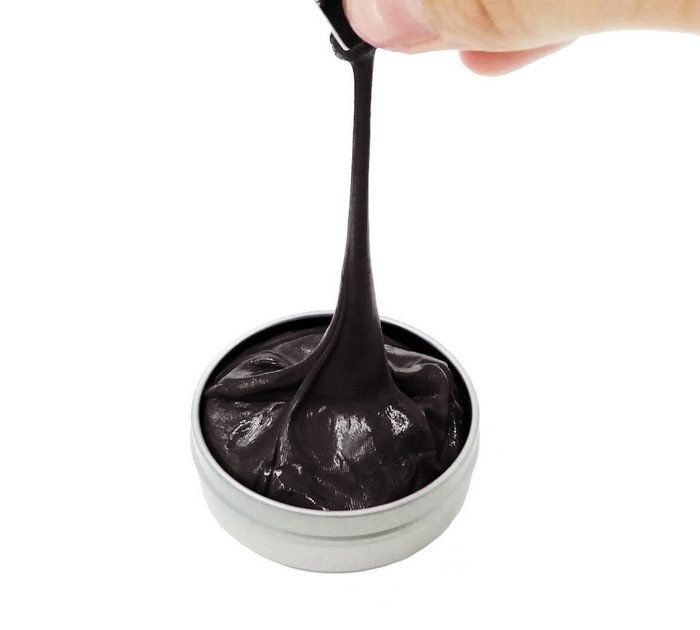
This phenomenon allows observers, especially children, to see the effects of magnetic forces directly. By manipulating the magnet, one can change how the magnetic slime behaves, offering a dynamic way to explore and understand the concepts of magnetism and physics.
Understanding the science behind magnetic slime can enhance the appreciation of this fun experiment, turning a simple craft into a learning experience that bridges play and education.
Troubleshooting Common Issues
Creating magnetic slime can be a fun and educational activity, but it’s not uncommon to encounter a few hiccups along the way. Troubleshooting these issues can help ensure that your magnetic slime turns out just right, providing hours of interactive fun.
Below are some common problems you might face while making magnetic slime and solutions to help you resolve them effectively.
Slime Is Too Sticky
One of the most frequent issues when making magnetic slime is ending up with a product that is too sticky. This can make it difficult to handle and less enjoyable to play with.
Solution: Add a small amount of liquid starch gradually and knead the slime thoroughly after each addition. The starch helps to firm up the slime, reducing its stickiness. Be careful not to add too much at once, as this can make the slime too hard and non-malleable.
Slime Is Too Brittle or Stiff
If your magnetic slime turns out too brittle or stiff, it can crack easily and won’t stretch as magnetic slime should.
Solution: This issue usually occurs due to an excess of iron oxide powder or an imbalance in the glue-to-starch ratio. To fix this, gradually mix in more PVA glue into your slime until it reaches the desired consistency. The glue will reintroduce flexibility and make the slime stretchier.
Lack of Magnetic Reaction
Sometimes, the magnetic slime may not react as strongly to a magnet as expected. This can be disappointing, especially if showcasing the magnetic properties is the main attraction.
Solution: Ensure you are using a strong enough magnet, like a neodymium magnet, which has a much stronger magnetic field than regular magnets. If the problem persists, increase the amount of iron oxide powder in your mixture. However, do this gradually and test the slime with the magnet frequently to find the right balance.
Slime Leaves Residue
Magnetic slime can sometimes leave a residue on hands or surfaces, which might be concerning when playing indoors or on sensitive surfaces.
Solution: To minimize residue, ensure that the slime is well-mixed and has achieved a consistent texture. If it continues to leave a residue, kneading in a bit more liquid starch can help bind the ingredients more tightly together. Always play with magnetic slime on surfaces that are easy to clean or lay down newspapers or a plastic sheet beforehand.
Color Fading or Dulling
Particularly if magnetic slime has been mixed with paints or pigments for aesthetic purposes, the vivid color of magnetic slime may fade or become dull with time.
Solution: Store the magnetic slime in an airtight container away from direct sunlight to prevent fast color degradation; UV light can rapidly breakdown colors. If the slime has already dulled, kneading it thoroughly and adding a little more colorant will help to restore its looks.
Slime Dries Out
Improper storage of magnetic slime can cause it to dry out, turn crumbly, and lose elasticity.
Solution: Always store magnetic slime in an airtight container to keep it moist and pliable. If it dries out, you can try reviving it by kneading in a few drops of water or additional PVA glue, which can reintroduce moisture and restore its stretchy texture.
By addressing these common issues, you can enhance your experience of making and playing with magnetic slime, ensuring that each batch turns out perfect and provides maximum fun and educational value.
Conclusion
Making magnetic slime presents an interesting approach for adults and children to investigate the characteristics of magnetism as well as a special fusion of science and entertainment. Anyone can make this amazing material with the correct mix of elements and some troubleshooting. Discover the pleasures of seeing your own magnetic slime respond to magnetic fields and enjoy the process of making it.
If you liked this project, you might also like to view Colorful Fluffy Unicorn Slime in 4 Steps…




















